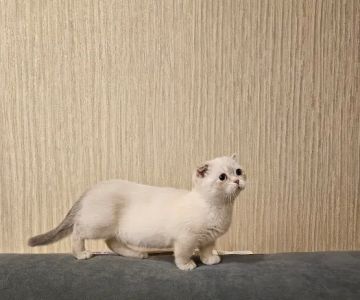How to Groom Long-Haired Cats: Essential Tips and Techniques
As a cat owner of a long-haired feline, I’ve come to learn that grooming is a vital part of maintaining their health and happiness. With their long, flowing fur, long-haired cats like Persians, Maine Coons, and Ragdolls require extra attention to avoid tangles, mats, and hairballs. Grooming doesn’t just make them look good—it’s also crucial for their comfort and well-being. Over the years, I’ve developed a routine that not only keeps my cat’s coat sleek and shiny but also strengthens the bond we share. Here’s my guide on how to groom long-haired cats effectively.
1. Why Grooming Long-Haired Cats Is Important
Long-haired cats, with their luxurious fur, are beautiful but also require regular grooming to keep their coats healthy. One of the biggest challenges with long fur is the risk of mats and tangles. If left unattended, these can cause discomfort and even skin infections. I remember the first time I saw a mat on my cat’s back, and I realized that it wasn’t just an aesthetic concern—it was a health issue. Mats can pull on the skin, causing irritation and sometimes even leading to sores.
Additionally, long-haired cats tend to shed more, and their fur can quickly become tangled in furniture, carpets, or even their own bedding. Regular grooming helps to reduce shedding around the house and keeps their fur manageable. Grooming also offers other health benefits, such as improved blood circulation and the prevention of hairballs, which can be uncomfortable for cats.
2. The Right Tools for Grooming
Before I dive into the step-by-step process, it’s important to have the right tools. Over the years, I’ve tried various grooming products and found that a few essentials work best for long-haired cats:
- Wide-toothed comb: Perfect for gently detangling the fur without causing discomfort.
- Slicker brush: A must-have for removing loose fur and preventing mats. I found this especially helpful for thick coats.
- Dematting rake: Ideal for stubborn mats that won’t come out with a regular brush.
- Flea comb: Useful for detecting and removing fleas or debris from the coat.
Having the right tools made a huge difference in how my cat responds to grooming. When I started using a slicker brush and a dematting rake, I saw a visible improvement in the quality of her coat. Be sure to choose high-quality, cat-specific grooming tools to ensure comfort and effectiveness during the grooming sessions.
3. Brushing Your Cat’s Coat: Step-by-Step
The first and most important step in grooming your long-haired cat is brushing. Regular brushing prevents mats and tangles from forming, and it’s an excellent way to bond with your cat. Here’s how I approach it:
- Start slow: If your cat isn’t used to grooming, I suggest starting with short, gentle brushing sessions. Gradually increase the time as your cat becomes more comfortable with the process.
- Brush in the direction of hair growth: Gently brush your cat’s fur in the direction of growth to prevent pulling and discomfort. Be gentle and avoid tugging on any mats or tangles.
- Work from the head to the tail: I usually start with the face and head, moving down the body and finishing at the tail. This way, I can ensure I cover every part of her coat thoroughly.
- Focus on areas prone to mats: Cats are more likely to develop mats around the neck, armpits, and behind the ears. Make sure to give these areas extra attention during brushing sessions.
I’ve noticed that when I brush my cat regularly, she actually looks forward to it. It’s a great way to calm her down and give her some extra affection. Plus, it significantly reduces the amount of shedding around the house.
4. Dealing with Mats and Tangles
Mats and tangles are inevitable with long-haired cats, and while regular brushing can prevent many of them, some mats will still form. When I first noticed a knot in my cat’s fur, I was unsure how to approach it. I quickly learned that mats should be addressed as soon as they are spotted. Here’s what I do:
- Use a dematting rake: If I find a stubborn mat, I gently work it out with a dematting rake. This tool has sharp teeth that help to break up mats without damaging the fur.
- Never pull: I learned the hard way that pulling on a mat can cause discomfort or pain for the cat. Instead, I try to gently separate the fur with my fingers or a comb.
- If necessary, trim: For very severe mats, trimming may be necessary. If you’re not comfortable doing this yourself, it’s a good idea to visit a professional groomer.
Dealing with mats doesn’t have to be stressful if done carefully. It’s all about being patient and using the right tools. The more you groom your cat, the easier it will be to manage any tangles or mats.
5. Bathing Your Long-Haired Cat
While long-haired cats don’t need frequent baths, there are times when a bath is necessary—such as after they’ve rolled in something dirty or sticky. Here’s how I go about it:
- Choose the right shampoo: I always use a cat-safe, gentle shampoo designed for long-haired cats. These shampoos help to keep the fur soft and shiny.
- Use lukewarm water: I make sure the water is not too hot or too cold—lukewarm is ideal to keep my cat comfortable.
- Be gentle: I avoid getting water into her ears and eyes, using a cup to gently pour water over her fur.
- Thoroughly dry: After the bath, I gently towel-dry her and use a blow dryer on the lowest heat setting to dry her fur completely.
Bathing my long-haired cat is a process I only do occasionally, but it’s important to keep her coat clean and fresh. If done properly, she actually enjoys the bath and feels refreshed afterward.
6. Regular Veterinary Check-ups
Finally, even though grooming is essential for maintaining a long-haired cat’s coat, it’s important to visit the vet regularly. Regular check-ups ensure that your cat’s coat remains healthy and that there are no underlying health issues contributing to poor coat condition. During vet visits, I also ask about any skin conditions or allergies that might affect my cat’s grooming needs.
Additionally, long-haired cats are more prone to hairballs, which can cause discomfort. I make sure to ask my vet for advice on managing this issue and how to help my cat maintain a healthy digestive system to prevent hairball formation.
Conclusion
Grooming long-haired cats may seem like a big responsibility, but with the right tools, techniques, and a little patience, it’s a task that’s both manageable and rewarding. Regular brushing, proper care, and a healthy diet all contribute to maintaining your cat’s luxurious fur. Grooming is also a great way to bond with your cat, providing both of you with a relaxing and enjoyable experience. Remember to keep your cat’s needs in mind and consult with a vet if you encounter any issues. With consistent care, your long-haired cat will remain healthy, happy, and gorgeous for years to come!











